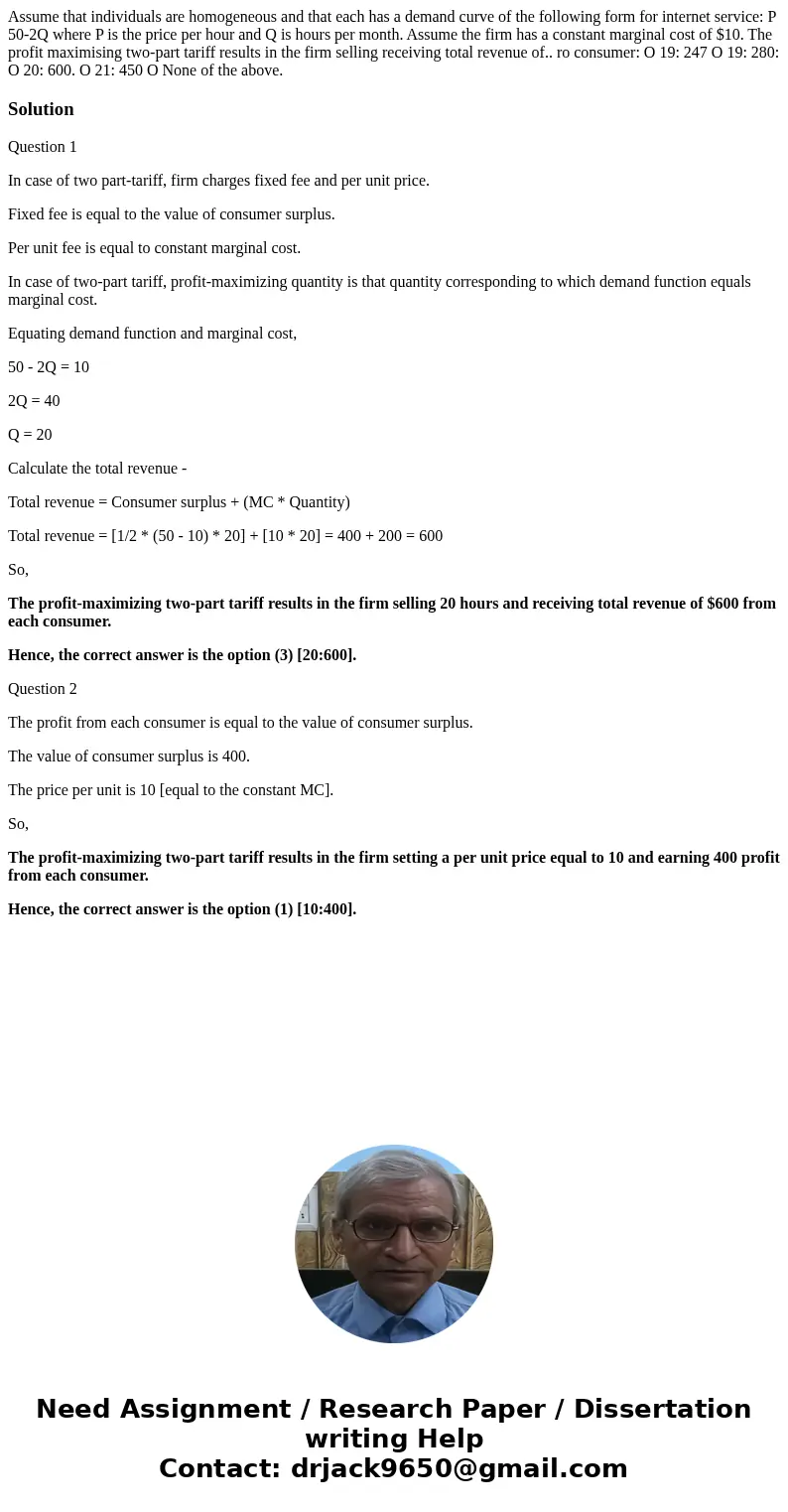Assume that individuals are homogeneous and that each has a
Solution
Question 1
In case of two part-tariff, firm charges fixed fee and per unit price.
Fixed fee is equal to the value of consumer surplus.
Per unit fee is equal to constant marginal cost.
In case of two-part tariff, profit-maximizing quantity is that quantity corresponding to which demand function equals marginal cost.
Equating demand function and marginal cost,
50 - 2Q = 10
2Q = 40
Q = 20
Calculate the total revenue -
Total revenue = Consumer surplus + (MC * Quantity)
Total revenue = [1/2 * (50 - 10) * 20] + [10 * 20] = 400 + 200 = 600
So,
The profit-maximizing two-part tariff results in the firm selling 20 hours and receiving total revenue of $600 from each consumer.
Hence, the correct answer is the option (3) [20:600].
Question 2
The profit from each consumer is equal to the value of consumer surplus.
The value of consumer surplus is 400.
The price per unit is 10 [equal to the constant MC].
So,
The profit-maximizing two-part tariff results in the firm setting a per unit price equal to 10 and earning 400 profit from each consumer.
Hence, the correct answer is the option (1) [10:400].

 Homework Sourse
Homework Sourse